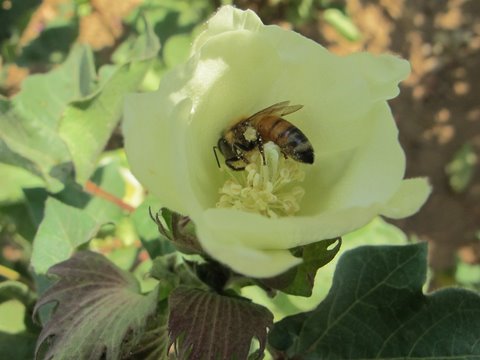Across North America, the phrase “fuel management” is used almost as often as “climate change” when people talk about wildfires. The idea is simple: forests burn because they are full of fuel, including trees, shrubs, branches, and dried leaves. If you remove some of that material, you make it harder for a wildfire to spread. Provincial governments, towns, and even ski resorts such as Whistler in British Columbia, Canada have invested millions of dollars in “fuel thinning,” which involves sending crews into the woods to cut down trees and haul away brush. While fuel thinning feels like common sense, Dr. Rhonda Millikin, a scientist based in Whistler, and her colleagues have found that what seems like common sense in one type of forest can be dangerously misleading in another. Their research, recently published in the journal Fire, revealed that in Whistler’s coastal rainforests, dense, wet, and shaded ecosystems, fuel thinning often has the opposite effect of what is intended. Instead of making these forests safer, thinning makes them drier, windier, and hotter: exactly the conditions that help wildfires spread. More
Whistler sits in British Columbia’s Coastal Western Hemlock zone, one of the lushest forest types in Canada. These forests are dominated by Douglas fir, cedar, western hemlock, and subalpine fir. They are famous for their towering trees, mossy ground layers, and cool, damp understories where snow often lingers through spring.
Unlike drier forests found in the B.C. interior or the fire-prone pine forests of California, these rainforests are not naturally built to burn. Their default state is moist. Thick canopies block sunlight, keeping the ground shaded and cool. Logs and branches on the forest floor decay slowly and act like sponges, soaking up and holding water. Even in summer, humidity levels tend to stay reasonably high.
That natural dampness provides a built-in ability for the forest to resist ignition and slow the spread of fire. Dr. Millikin and her team wanted to see whether thinning helped or harmed that fire resilience. They set up research plots in four areas around Whistler: Alpine, Lost Lake, Callaghan, and Cheakamus. Some areas had been thinned by contractors, while others were left untouched.
Over two seasons, spring (when snow is melting) and late summer (when fire danger is highest), the researchers took hundreds of measurements. They recorded air temperature, soil moisture, wind speed, solar radiation, relative humidity, snow depth, and even fuel moisture (how much water is stored in leaves, moss, or wood).
The picture that emerged was striking: thinning consistently tipped the forest toward conditions that increase fire risk. The researchers identified several factors that contributed to this phenomenon. For instance, thinned areas received up to 8 times more solar radiation than unthinned ones in spring and 21 times more in late summer, and this increase in full, hot sunlight meant that the ground dried out faster in thinned areas. On average, air temperature in thinned areas was higher. All microclimate variables changed in the direction of an increase in wildfire potential for both spring and late summer.
Soil in thinned areas held significantly less water, about 30% lower in spring. Since soil moisture is a key buffer against fire (wet soil helps keep roots and surface vegetation cool and damp), this loss is critical. Relative humidity, meaning the amount of water vapor in the air, was about 9% lower in thinned areas during spring. This drier air pulls moisture out of leaves, mosses, and logs, making them more flammable.
In unthinned forests, snow lingered well into spring, releasing water slowly and keeping the forest cool. In thinned areas, snow was gone much earlier, removing this natural “air conditioning.” Wind was also a factor. Trees normally act as a windbreak. When the canopy was thinned, wind speeds inside the forest rose by 63-68%. Faster winds feed fire spread by fanning flames and drying fuels more quickly.
The research team also measured moisture in ground fuels like moss, cones, small branches, and decaying wood. In late summer, thinned areas had 17% less moisture than unthinned ones. When all these factors are added together, the outcome is clear: thinning increases flammability.
Most people picture a raging wildfire racing through dense forest, fueled by tightly packed trees. Cutting some of those trees down seems like it should reduce the risk. And indeed, in some forests, particularly dry pine forests and plantation forests, thinning may help to prevent fire from climbing from the ground into the tree canopy, where it can explode into an unstoppable crown fire.
But in Whistler’s coastal rainforest, crown fires are rare. The dense canopy and damp environment keep fuels too wet. The bigger threat is surface fire, which feeds on needles, branches, and grasses near the ground. And ironically, thinning makes those ground fuels more flammable by exposing them to sun and wind.
The differences are visible even without a scientific instrument. In untouched forest, the ground is shaded and dotted with large pieces of coarse woody debris, fallen logs and branches that act as long-term water reservoirs. The light on the forest floor is dappled, like sunlight through stained glass.
In thinned areas, by contrast, the ground is bare and sunbaked. Canopy cover dropped from about 93% to just 63% after thinning. Photos taken by the research team show bright, harsh light flooding the ground, where spongy moss and moisture-rich logs have been replaced by exposed soil, rocks, and chipped wood.
The study also revealed some less obvious side effects. For instance, thinned areas became magnets for unauthorized trails, used by hikers, bikers, and even motorized vehicles. More human activity increases the chances of accidental ignitions. Logging equipment and thinning crews caused bark damage, soil erosion, and disturbance to understory plants. This reduced the forest’s overall resilience to fire.
So, what is the best way to protect such forests from fire? Dr. Millikin doesn’t suggest doing nothing, but she does argue for approaches that respect the unique character of coastal rainforests. Such strategies could include retaining canopy cover wherever possible, to preserve the cool, damp microclimate and protecting coarse woody debris rather than removing it, as it is essentially nature’s water storage system.
Another strategy is to focus on FireSmart practices around homes and infrastructure, using fire-resistant materials, retaining trees and retaining humidity with smart irrigation, rather than trying to re-engineer the forest itself. You can follow further research from Millikin and colleagues demonstrating how rainwater catchment for healthy vegetation and sprinklers, can extinguish the embers that could threaten your home at https://www.rethinkwildfire.com/.
Dr. Rhonda Millikin’s study underscores a larger point: there is no universal recipe for managing wildfire. A “one size fits all” strategy risks not only wasting millions of dollars and work hours but also making forests more flammable and communities less safe.
At a time when climate change is amplifying fire risk everywhere, this lesson is more urgent than ever. Forests carry their own wisdom, shaped by centuries of adaptation. When we intervene without listening to that wisdom, whether through thinning, burning, or clearing, we may do more harm than good.







